Is the 2017 Honda Civic Si Easy to Work on
Though the Nürburgring-conquering Civic Type R attracts big headlines, its uncompromising performance bent and expected price tag in the mid-$30,000 range preclude it from being anything more than a low-volume halo car for wealthy, diehard sport compact fans. The 2017 Civic Si on the other hand, with an affordable price of $24,775, is the performance Civic that most people will have a chance to drive and own, which arguably makes it more important than the Type R. To see if Honda has a winner on its hands, we drove the coupe at the Honda Proving Center in the Mojave Desert and on mountain roads near Los Angeles.
The first thing we need to address about the Civic Si is the engine. It's a turbocharged 1.5-liter four-cylinder that is based on the one found in standard turbocharged Civics, but it features a larger turbocharger. The bigger compressor allows the engine to make 205 horsepower and 192 pound-feet of torque, making it the most powerful Civic around until the Type R goes on sale. It certainly feels peppy, with boost coming on quickly, strongly, and smoothly. It accelerates willingly, and feels distinctly faster than regular Civics. The low-down torque also easily surpasses previous high-revving Si models to become the most tractable Si ever. The engine is quite smooth, too, and has a pleasant muted growl when mashing the gas pedal.
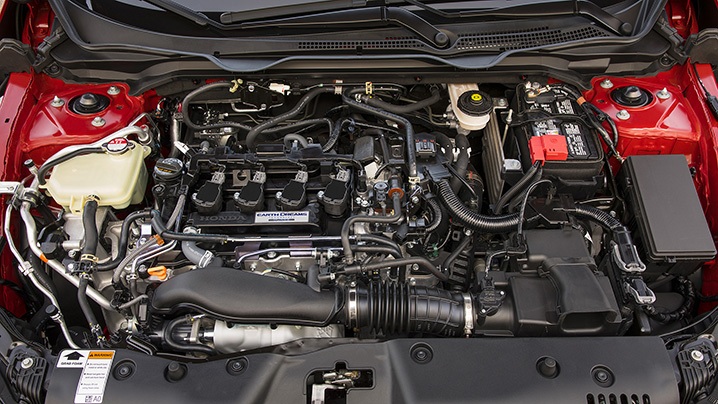
But for all the power improvements the Si has, on paper it has a major power and torque deficit compared with the more powerful and torquey VW GTI and Ford Focus ST. In reality, that deficit comes through clearly, as the Si never pins you to the seat the way those hot hatches do. This is despite the fact that both of those cars are 145 pounds and 334 pounds heavier than the Si, respectively. It also doesn't feel as eager to rev as the old naturally aspirated engines, nor does it shed RPM quickly, making upshifts less smooth and enjoyable. It's possible that the aftermarket could offer a solution in the near future to address the horsepower deficit. An aftermarket tuner, Hondata, already offers a tune that makes a conventional turbocharged Civic more powerful than an Si, so just imagine what it could do to the Si's engine with its bigger turbo.
Connected to the Si's turbo engine is a six-speed manual transmission - the only transmission available - and a helical limited-slip differential. The transmission is very good, though it isn't one for the Honda hall of fame. Throws are very short and require hardly any effort, but it lacks some of the slick mechanical feel of best Honda shifters, such as those in the S2000 and even the 2006-2011 Civic Si. The limited-slip differential did a good job of getting power to the ground, since we never once noticed the inside wheel spinning away power in turns. Some of the credit may be due to the optional summer tires ($200) that were equipped to all of the test cars. Torque steer was also non-existent, but then again, this isn't a torque monster.
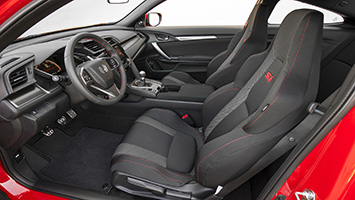
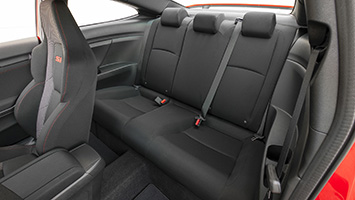
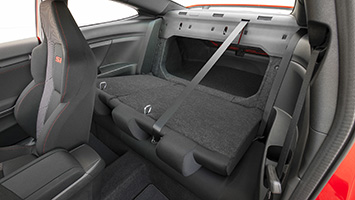
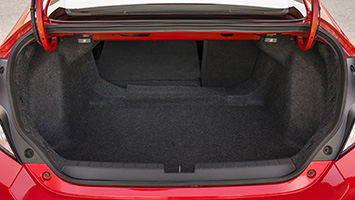
Speaking of steering, this is one of the areas where the Si truly shines. It never feels overly heavy in either normal mode or Sport mode, the latter of which reduces assist from the electric power steering along with firming up the shocks and making the throttle more responsive. In Sport mode, the steering is also astonishingly precise and accurate. The front wheels respond to the finest and most delicate inputs, and you will always know where the wheels are pointing. In normal mode, it feels a bit less precise. Resistance builds up naturally in either mode.
Matching the steering is a poised chassis. Compared with the standard Civic, the Si features stiffer springs, anti-roll bars, and adjustable shock absorbers. They all pay dividends in dramatically reduced body roll and impressive grip. You can keep adding more and more speed and throttle through a corner, and the car simply sticks, exhibiting only mild understeer. The suspension deserves all of the credit for the car's stability, however. It seemed nearly impossible to upset the car in a corner. Even over uneven and bumpy mountain roads, the car never wiggled or side-stepped. The Si also gets larger brake discs that work extremely well for hauling the car down from speed.
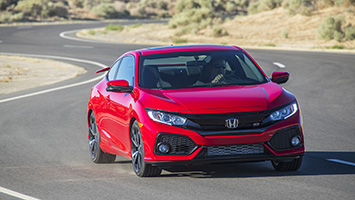
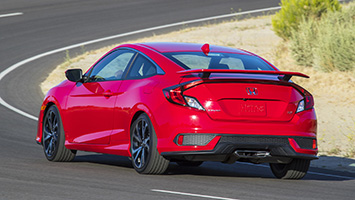
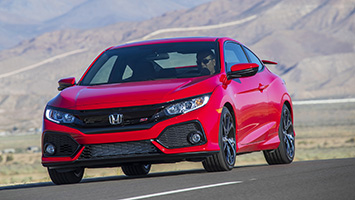
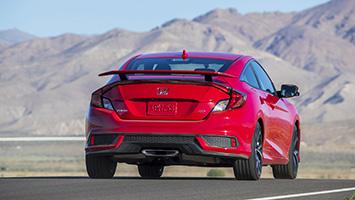
The clear trade-off for the Si's improved handling is diminished ride quality. Medium and large bumps will result in moderate jostling, although it's livable. Sport mode will bump you about more over those same bumps, and will reveal many minor imperfections that remain invisible in normal mode.
There is yet another area the Civic Si shines, and that's in the value department. If you had complaints about the austere accommodations of the (also fun) Civic Sport hatchback, they're all addressed in the Si. The base price of $24,775 includes a sunroof, heated sport seats, a touchscreen infotainment display with Apple CarPlay and Android Auto, and dual-zone automatic climate control. The only options are the summer tires and dealer accessories like side skirts, optional wheels, interior lighting, and cargo management, and floor mats. That means you can have exactly the type of Si we drove for $24,975. The price is the same for the sedan, too. Honda does have a few more accessories in the works, however. According to a Honda representative, Honda Factory Performance (HFP) parts will be available later this year, including lowering springs, upgraded brakes, and 19-inch wheels.
You might say it's slightly underpowered, but the Civic Si is a thoroughly fun sport compact car. It's also better equipped and more fun to drive than the Civic Sport. And it's much more affordable, and probably easier to live with, than the upcoming Type R. It's the just-right Honda Civic, and it's worth your consideration.
Related Video:
Source: https://www.autoblog.com/2017/05/30/2017-honda-civic-si-coupe-review-2398249323724023/
0 Response to "Is the 2017 Honda Civic Si Easy to Work on"
Post a Comment